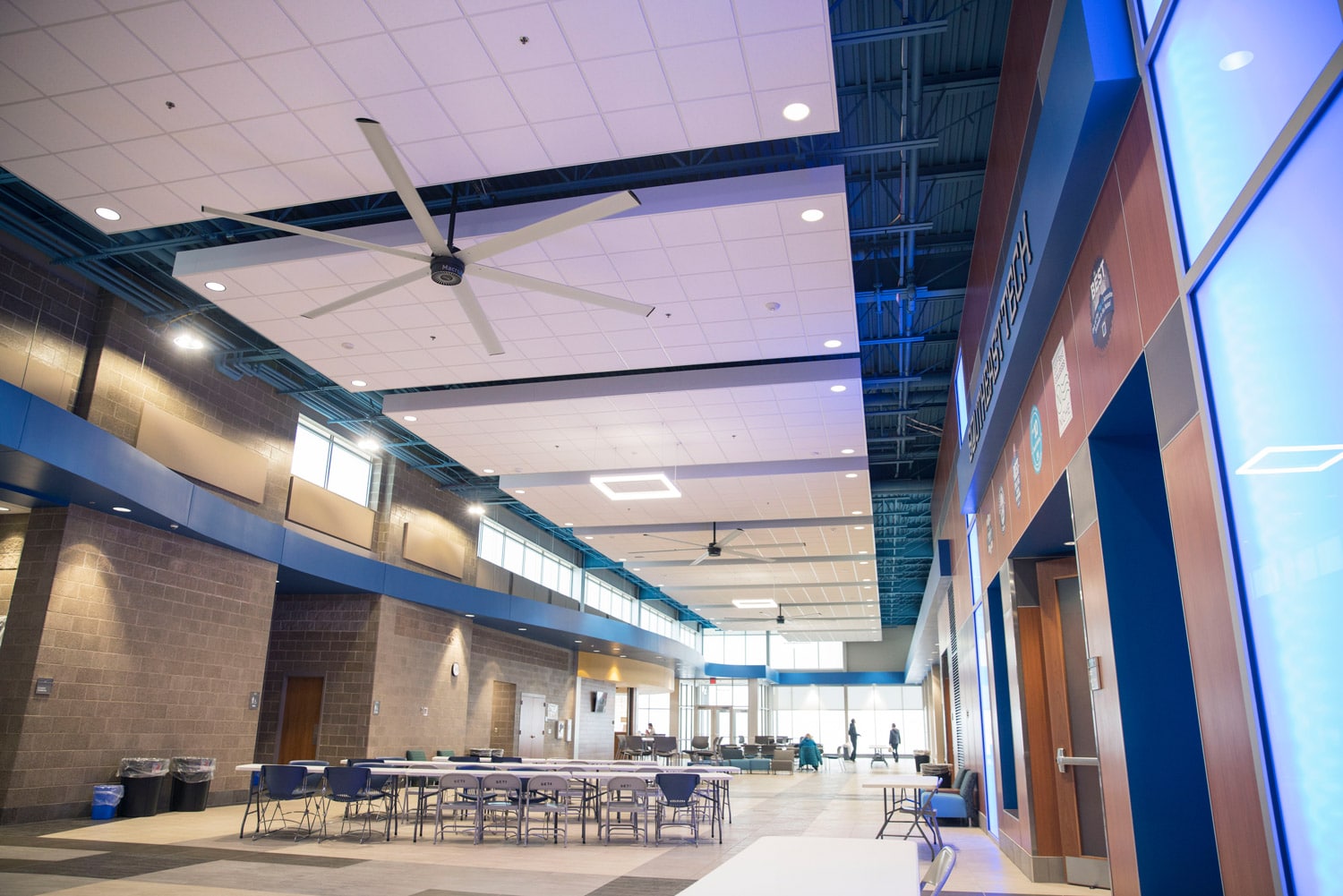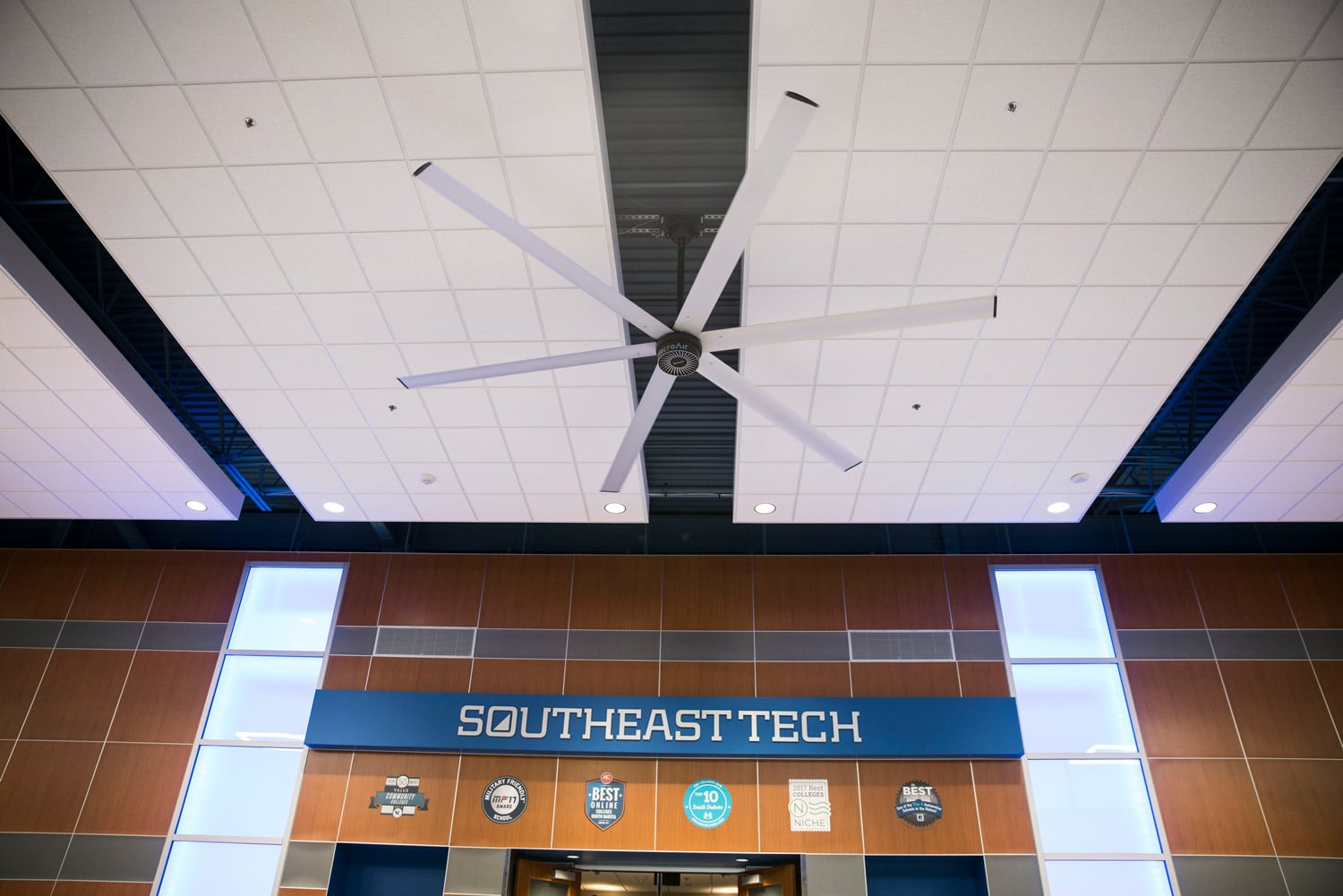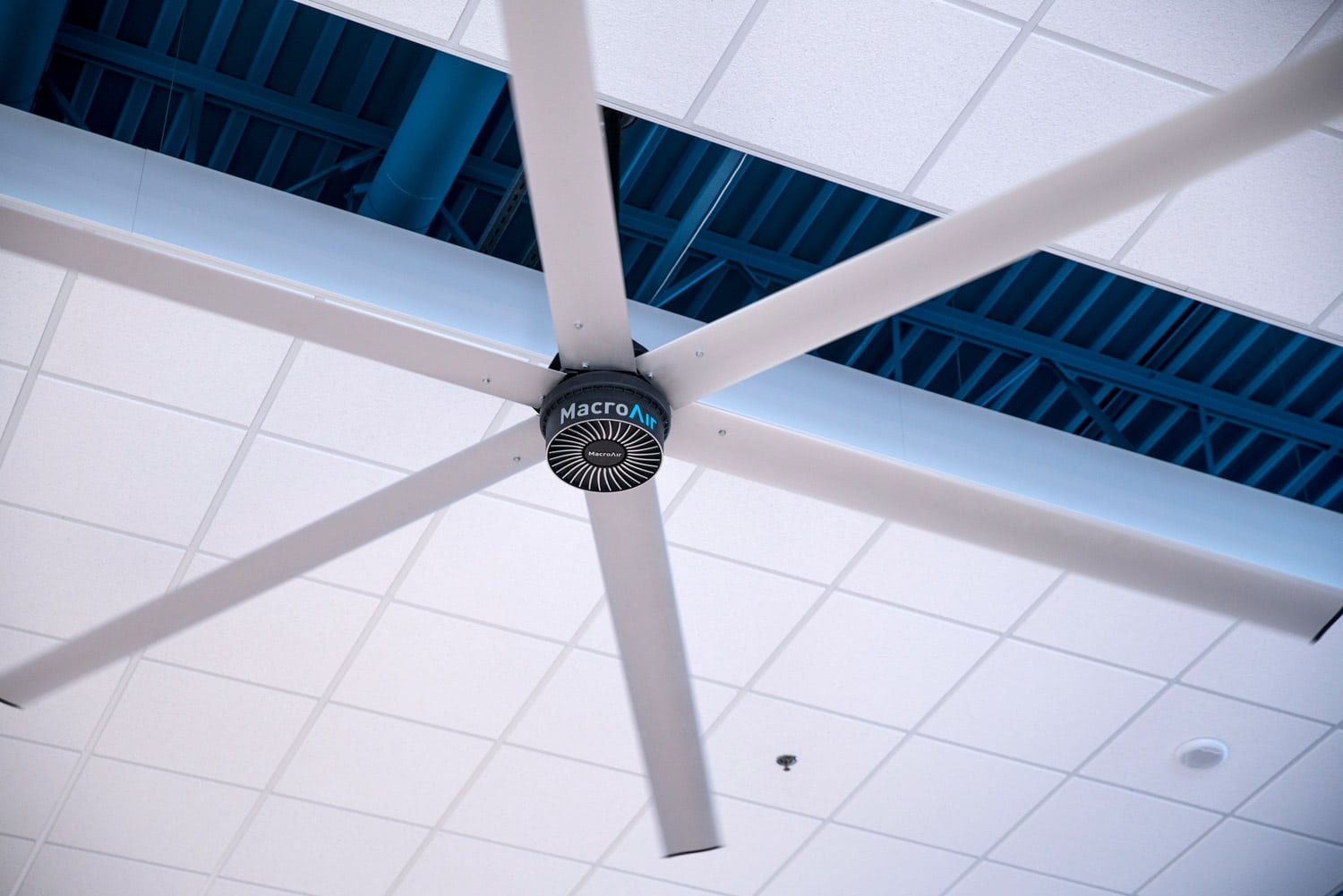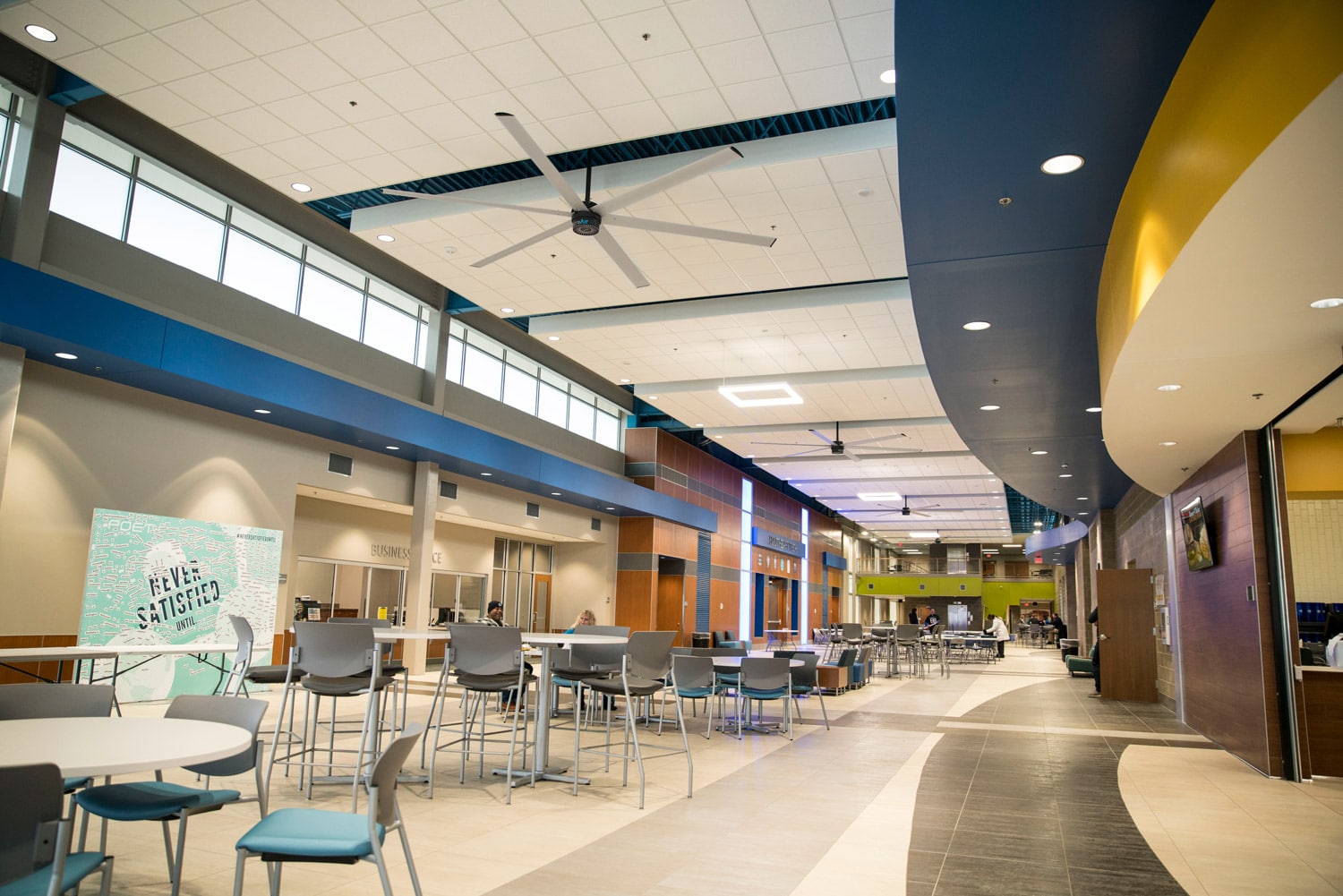
[Photo: Courtesy of MacroAir]
We’ve all been in buildings with thick, sticky air that smells bad and feels like it’s never circulated. It’s kind of like the air in a plane on a transcontinental flight, leaving us in an icky haze. These are not places of optimal health and wellness. Fortunately today there are MacroAir fans, the original high-volume, low-speed—or HVLS—ceiling fan that works as well as it looks.
When designing The Hub, a student commons building at the Southeast Technical Institute in South Dakota, architect Michelle L. Klobassa knew she wanted MacroAir fans. When early sketches of the architectural plan presented large volumes of spaces, she and the project group in the South Dakota office of TSP—an architecture, engineering, and planning firm—immediately wanted to integrate the fans, having been familiar with the California company’s products from other projects. The large ceiling fans now help to optimize health and wellness for the multitude of students, professors, and staff who use the space.
“The ceiling heights are really tall, so the fans help destratify the air at the top of the ceiling,” says Klobassa, a principal with the firm. An added plus—they’re more cost-effective and energy-efficient than traditional fans and HVAC systems.
On this project, Klobassa opted for the AirVolution-D 550 model. The 1.05 horsepower model is available with diameters ranging from 8 to 18 feet in diameter. Akin to having a personal wind turbine, these powerful fans bear a slim, clean, contemporary look that make a natural fit for a college atmosphere. “You see them and can’t help but notice them because their size creates a visual impact. They’re attractive to design groups like architects, not just mechanical engineers,” Klobassa says.

[Photo: Courtesy of MacroAir]
The Wellness Formula
All these factors contribute to the human wellness formula that makes people want to be somewhere. That subtle air movement by fans upon workers and other people using the space lends an inherently good feeling because it’s reminiscent of being outdoors and feeling a breeze, Klobassa says. That positively impacts our reaction to being in a place, especially because we’re such an indoors culture now.
Drivers for using the fans include sustainability, aesthetics, and air circulation. Here’s how that often turns out:
• Facility owners latch on to the word sustainability because these fans keep buildings in better condition longer. They keep water droplets from forming when used in humid locations or in settings that produce a great deal of moisture. That, then, is good for food and any materials that might otherwise rust.
• Owners also appreciate the improved safety conditions these fans generate. That is, in warehouses with forklifts, they can eliminate hazardous slipping conditions like Sweating Slab Syndrome by preventing moisture from condensing on the floor.
• Owners and facility managers enjoy conserved energy and smaller utility bills, too. The large ceiling fans are good when facility managers just want to turn on the air to create a space with consistent temperature instead of large pockets of hot or cold air when using the HVAC system. IT also translates to not having to set the air conditioner as low.
“In the summer, if you’re only setting the thermostat to 77 degrees to cool the space instead of 70, you’re saving all that energy. In the winter, when warm air gets trapped up top, run the fan in reverse to push the air along the walls and down to warm up more air,” says Jonathan Hollist, research and design engineer for MacroAir.
That creates comfort and cleaner air, in turn yielding better health and optimal wellness for everyone who uses the space.

[Photo: Courtesy of MacroAir]
Before & After
When MacroAir’s research and design engineers first gathered, they wanted to create something better than the everyday fan. They began by working with fans with 10 blades and big AC induction motors with gearboxes.
“We invented the HVLS—the large diameter—ceiling fan,” says Jonathan Hollist, research and design engineer with MacroAir. “We’ve gone from inventing a large industrial ceiling fan to meet a basic need to developing the most innovative fan in the world that provides quality air movement for any space.”
By 1998, their HVLS (high-volume, low-speed) ceiling fan had far surpassed the common fan, revolutionizing the ceiling fan market. It used fewer blades, which translated to using less energy. Five years later, MacroAir incorporated. Today, the California-based company creates a variety of aesthetically pleasing fans. “On most we have six blades now, and on a few we have three. We’ve also gone from a gearbox down to a DC brushless motor,” Hollist says. “Now they’re long-life and more efficient. That allows them to be more reliable and reduce the amount of total power needed to turn a fan.”
MacroAir fans’ quietness amplifies the comfort of a room, which anyone used to ceiling fans that thunk thunk thunk as they turn can appreciate.

[Photo: Courtesy of MacroAir]

